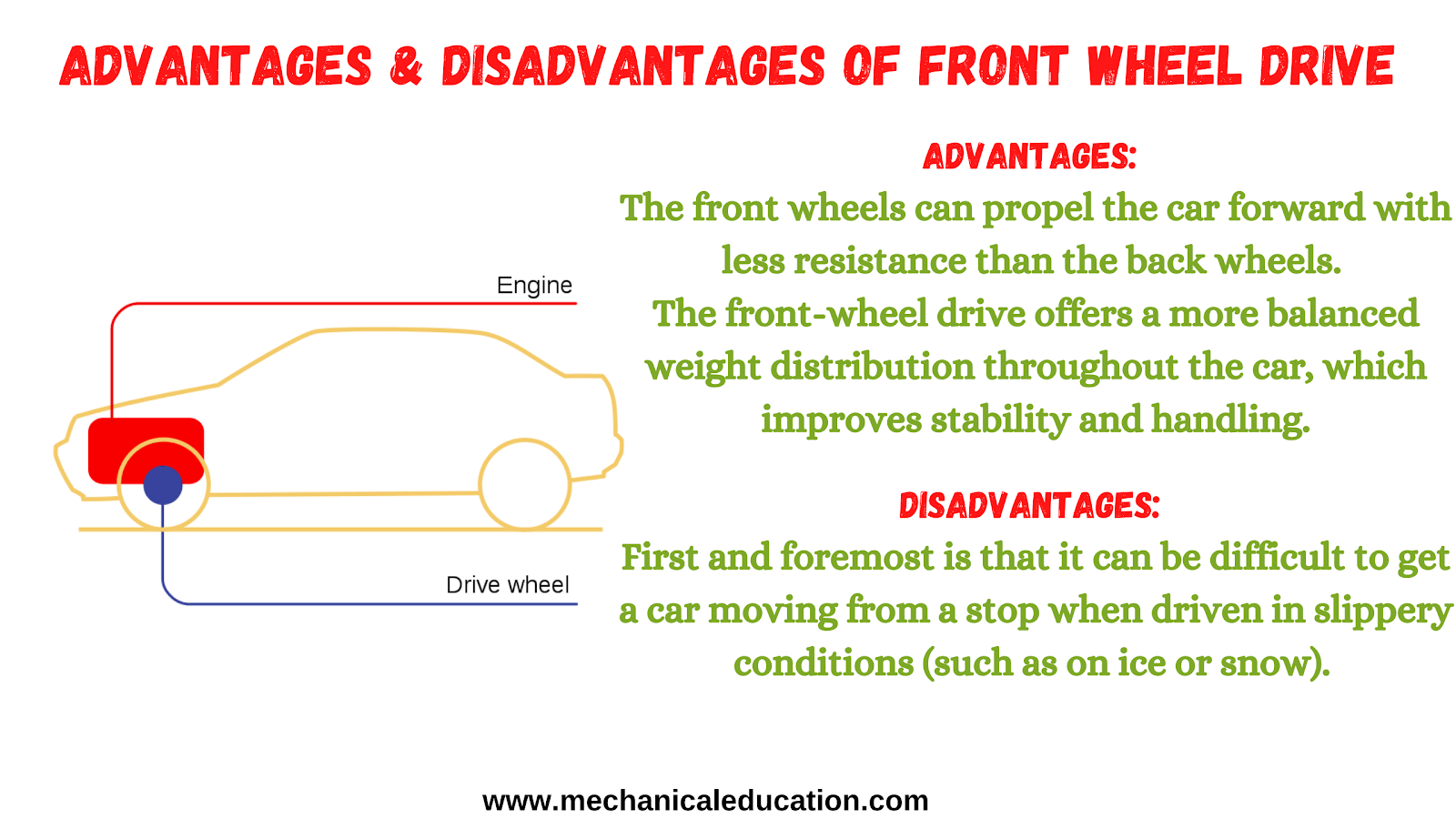Front-wheel drive – Advantages and Disadvantages
What is a Front Wheel Drive?
A front-wheel drive is a type of powertrain layout where the engine and gearbox are located at the front of the vehicle, driving the front wheels.
Advantages of Front-wheel drive:
- The front wheels can propel the car forward with less resistance than the back wheels.
- The front-wheel drive offers a more balanced weight distribution throughout the car, which improves stability and handling.
- The front-wheel-drive includes better traction for cornering and less risk of losing control when compared to rear-wheel-drive vehicles.
- They also tend to be more fuel-efficient as more of the engine’s exhaust gas power is used for the forward motion rather than turning the wheels.
- Increased traction in slippery conditions due to the weight of the engine being over the driving wheels.
- Better fuel economy as the driveshaft can be shorter (therefore lighter).
- More space for passengers and luggage as the engine is located at the front of the car.
Disadvantages of Front-wheel drive:
- First and foremost is that it can be difficult to get a car moving from a stop when driven in slippery conditions (such as on ice or snow).
- Second, because the engine is located in front of the car, it can be damaged more easily in a collision. Lastly, some people find that front-wheel-drive cars handle less responsively than rear-wheel
- The front-wheel-drive can have a serious disadvantage in acceleration due to the weight being over the front axle, but depending on the transmission type and engine size torque is still provided by the rear wheels as well as from power transfer from other wheels.
- They do not handle as well in low traction conditions such as on icy or snowy roads.
- Slight disadvantages may be a long response time where it takes longer for automobiles to take enough distance to stop, limited steering range which results in a shorter turning radius.
- Increased wear on the front tires as they bear more of the car’s weight.
- Increased torque steer when accelerating or turning (especially in powerful cars) as the force exerted on one wheel can cause it to pull to one side or even spin completely around).



